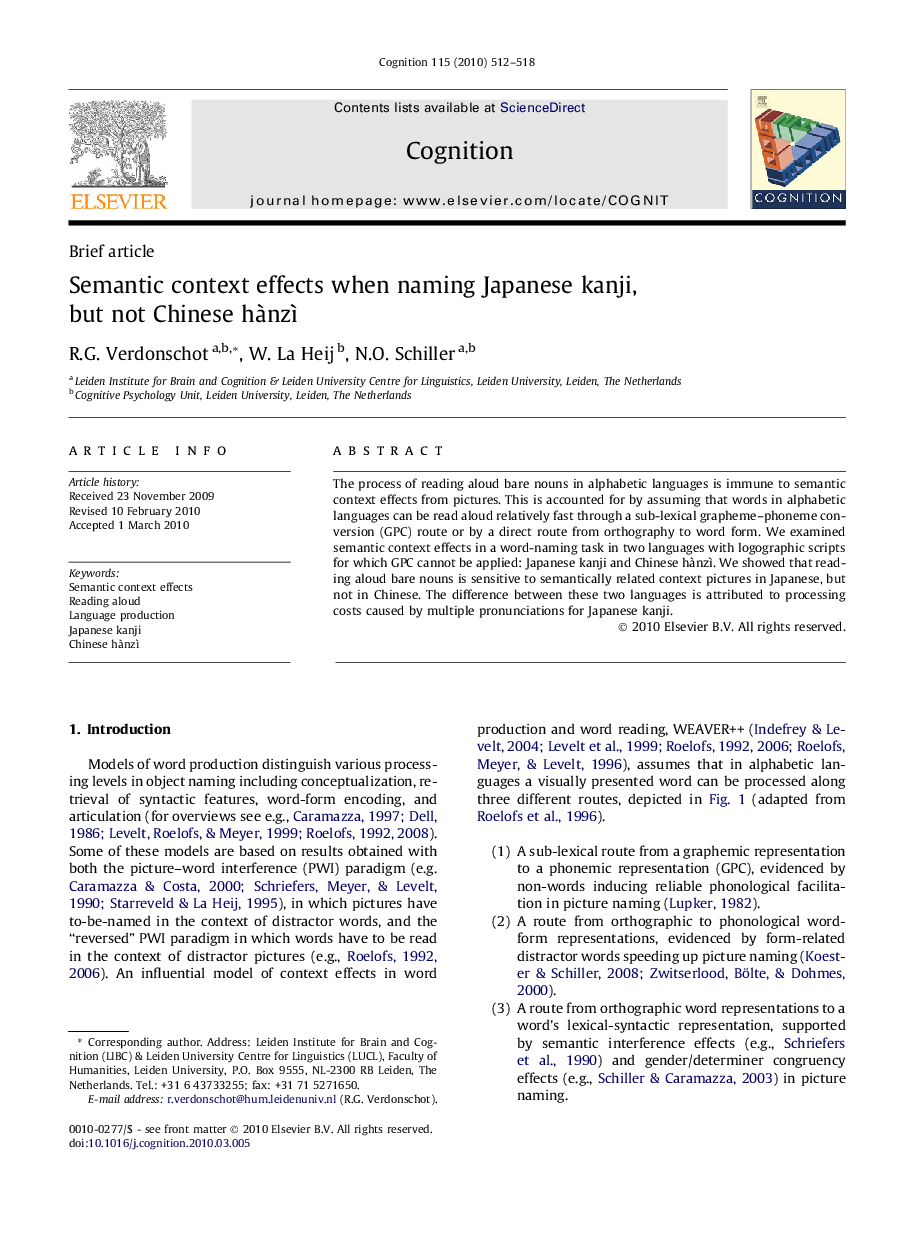| Article ID | Journal | Published Year | Pages | File Type |
|---|---|---|---|---|
| 927163 | Cognition | 2010 | 7 Pages |
The process of reading aloud bare nouns in alphabetic languages is immune to semantic context effects from pictures. This is accounted for by assuming that words in alphabetic languages can be read aloud relatively fast through a sub-lexical grapheme–phoneme conversion (GPC) route or by a direct route from orthography to word form. We examined semantic context effects in a word-naming task in two languages with logographic scripts for which GPC cannot be applied: Japanese kanji and Chinese hànzì. We showed that reading aloud bare nouns is sensitive to semantically related context pictures in Japanese, but not in Chinese. The difference between these two languages is attributed to processing costs caused by multiple pronunciations for Japanese kanji.
